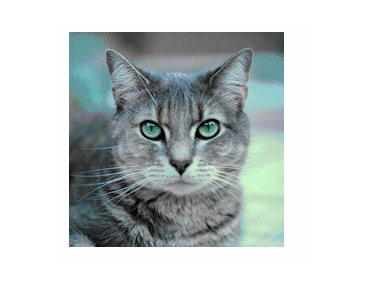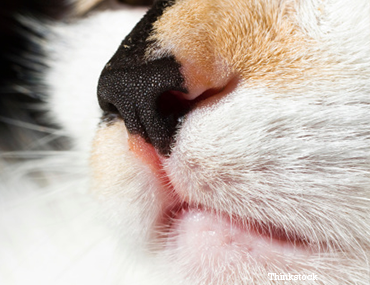crypto disease in cats
Cryptococcosis is a non-contagious rare or sporadic disease which occurs worldwide and is considered the most common systemic fungal disease in cats. It may be especially sluggish and although it occurs in less than 50 percent of afflicted animals your cat may also have a mild fever throughout this time.
Place solids in a plastic bag and dispose of them in the outside garbage.

. 19-30 In one study of specimens collected from around the United States Cryptosporidium spp. In the United States Cryptosporidium spp. Cats with healthy immune systems usually recover quickly and never show signs of infection or have only mild diarrhea.
Crowding and unsanitary conditions increase the risk of exposure. It is estimated that up to seven percent of all cats have cryptococcus spores present in their body but only a very small amount of these cats will produce symptoms. Nodular tissue seen at the nostrils.
Cryptosporidium is characterized by diarrhea and gastroenteritis. As the name implies this bacterial infection is usually transmitted from cat to human via scratches although it can also be transmitted via bite wounds and when a cat licks the open wounds of a person. It is caused by the Cryptococcus neoformans-Cryptococcus gattii species complex which includes eight genotypes and some subtypes strains with different geographical distribution pathogenicity and antimicrobial.
Felis is most common and is transmitted between cats by the ingestion of feces from mutual grooming shared litterboxes ingestion of contaminated food or water and. Most Cryptosporidium infections in dogs and cats are subclinical. Crypto and Other Fungal Diseases in Cats.
Cryptosporidiosis usually occurs in kittens younger than 6 months of age. A typical presentation of a cat with disease is one that has an underlying immunosuppressive disorder such as a feline leukemia virus infection Monticello et al 1987. Are intestinal coccidian parasites that are associated with disease in some infected hosts.
Read on to learn more about the symptoms and treatment of this feline infection. Cryptosporidium is an intestinal parasite that is commonly ingested through contaminated water food or feces. Cryptosporidium oocysts were detected in faecal and mucosal impression smears stained with auramine-phenol and modified Ziehl-Nielsen techniques.
Persistent infections usually denote an underlying cause such as canine distemper. Infections of dogs and cats can be quite common with prevalence rates generally being 2 to 12 in dogs or cats with or without diarrhea depending on the method of diagnostic testing. Cryptosporidiosis may be a primary disease although it is often seen as a secondary disorder in cats and people with compromised immune systems.
There are several species that infect animals and may infect people. Vet bills can sneak up on you. The resulting diseased condition cryptosporidiosis can typically be treated effectively with medications.
This disease is no more likely to affect one breed than another and is commonly seen in kittens. Endogenous developmental stages of cryptosporidium were found in the microvillus region of enterocytes of eight of 19 positive cats in sections stained with haematoxylin and eosin. How can I reduce the chances of catching cryptosporidiosis from my cat.
As a responsible horse owner its key to understand the common vital signs of your equine companion especially throughout the taxing summer months. Ellis explores the question should we be aggressively treating every case of cryptosporidiosis in a shelter setting. Symptoms include profuse watery diarrhea with cramping abdominal pain vomiting and nausea.
Are intestinal coccidian parasites that are associated with disease in some infected hosts. Other recent posts from our blog. Clean and disinfect the floor with a 10 solution of bleach.
In the United States Cryptosporidium spp. Crypto in cats is rare but sometimes cats can carry the parasite without showing any signs of illness. Canis infects dogs while C.
From 203 quotes ranging from 500 - 3000. Crypto hidden sporidium related to the spore-like oocyst stage and felis for cat. In immunocompetent and healthy dogs and cats the infections are usually self-limiting.
Signs in cats. Cryptosporidiosis is an often-seen parasite in cats in high stress settings. It can occur by itself or as a secondary infection in cats who have lowered immune function.
Scoop litter trays daily and empty once a week. However this disease can be life-threatening for cats with severely compromised immune systems. Cryptosporidium is a protozoa that causes a condition known as cryptosporidium in cats.
Felis is most common and is transmitted between cats by the ingestion of feces from mutual grooming shared litterboxes ingestion of contaminated food or water and. Cat scratch disease CSD is caused by a bacterium called Bartonella henselae which may be carried in the saliva of infected cats and in the bodies of cat fleas. The impact of the disease tends to be minimal in cats that have a competent.
However clinical signs are usually mild and self-limiting. The causal fungi Cryptococcus neoformans and C gattii exist in the environment and in tissues in a yeast form. No matter what species is involved Cryptosporidiumfelis or Cryptosporidiumparvum cats do present with severe disease due to infection with this pathogen.
The parasite is protected by an outer shell that allows it to survive outside the body for long periods of time and makes it. This species was described by Iseki in 1979 but it has taken some time for the separate disignation of the species in the cat to be generally accepted. DNA was amplified by PCR assay from feces of 294 of.
Young cats may be more susceptible to infection. Other symptoms specific to cats include. The results suggest that cryptosporidium.
Seizures disorientation and altered sense of balance. DNA was amplified from 294 of cats with diarrhea. Cats that ingest the contaminated feces can become infected.
Get the pawfect insurance plan for your pup. Cryptosporidium felis Iseki 1979. Cryptosporidium infection is of particular concern in humans that are immuno-compromised.
Both the parasite and the disease are commonly known as Crypto There are many species of Cryptosporidium that infect animals some of which also infect humans. Cryptosporidium is a microscopic parasite that causes the diarrheal disease cryptosporidiosis. Diarrhea and dehydration are the primary clinical signs.
Always wash your hands after touching your. Cryptococcosis is a systemic fungal disease that may affect the respiratory tract especially the nasal cavity CNS eyes and skin particularly of the face and neck of cats. At this time it is considered by many that this is a valid.
Common Vital Signs You Should Know On Your Horse. DNA was amplified from 294 of cats with diarrheaIn cats C.

Pathogens Special Issue Felid Parasitoses New Insights And Open Perspectives

First Humans Now Pets Cats In Infected Or Self Isolating Homes Told To Stay Indoors

Is My Cat Sick The Subtle Signs Of Feline Illness Seven Hills Veterinary Hospital

10 Scary Diseases Pets Give People

Pathogens Free Full Text Feline Demodicosis Case Report First Molecular Characterization Of Demodex Mites In Romania Html

Triaditis A Disease That Affects Cats

Companion Animal Parasite Council Cryptosporidium

Feline Infectious Diarrhea The Usual Suspects Plus How To Deal With Them

Pathogens Free Full Text Unusual Presentation Of Feline Leprosy Caused By Mycobacterium Lepraemurium In The Alpine Region Html

Intestinal Parasite Cryptosporidium In Cats Petmd

Feline Giardia Transmission Diagnosis And Treatment Today S Veterinary Practice



